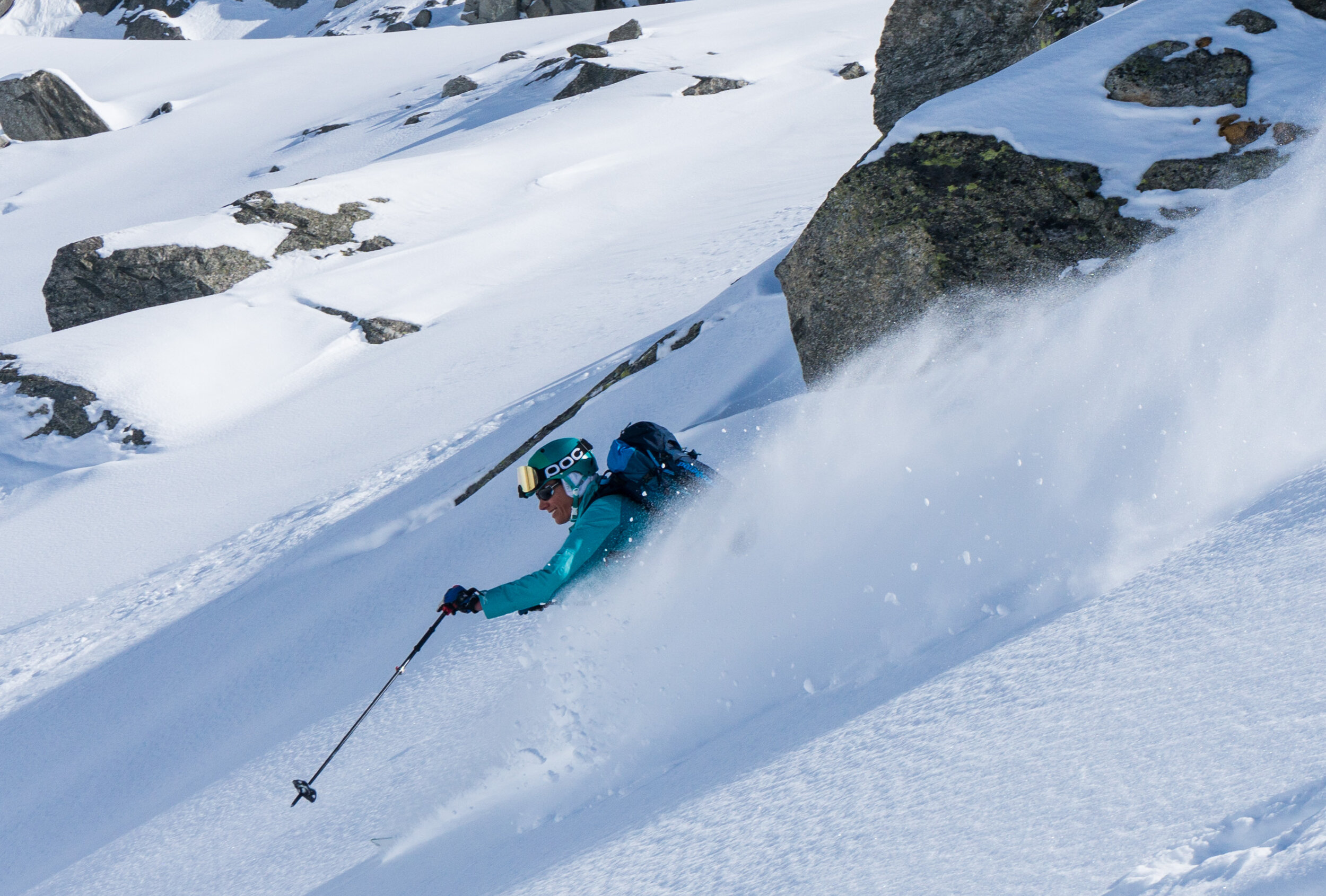Learn the language of Backcountry Skiing
/As you begin to learn about splitboarding and backcountry skiing, you may quickly become inundated with a new vernacular you are expected to understand. Some terms seem to be self-explanatory, while other terms used may have a little more nuance behind them and an understanding of backcountry skiing may help you better keep up. Just like learning a new language, it can be helpful to learn the language used by backcountry skiers in the United States. Below is a list of common backcountry skiing terms. Keep in mind this is not a comprehensive list of all terms and vernacular used in backcountry skiing.
Ski Tour- A day out in the mountains on skis or a split board, hiking up and skiing down.
Skins- Traction added to the bottom of skis or splitboard that aids in climbing. Made with a high traction mohair or nylon side and a sticky glue side that is easily attached for ascension and removed for decent. The verb for actively moving uphill in this manner is Skinning
Skin Track- A track that is set into the snow by hiking uphill on skis or spllitboard
Booter- A boot-pack that has been set in terrain that has become too steep to ascend with skis on.
A.V.A. Turn- An effective technique used to change direction while hiking uphill.
Kick Turn- Another effective technique used to change direction when hiking uphill, often in steeper terrain.
Transition- A transition point in the tour that normally involves putting skins on to ski uphill, taking them off for the downhill, or mounting or unmounting your skis from your backpack after a boot-pack.
Mini Golf- A backcountry ski tour that involves skiing many sections of smaller terrain, often to find the best snow or to reduce risk when the avalanche danger is high
Skimo- Colloquial for Ski Mountaineering. Steep technical skiing in high consequence terrain. May involve additional aspects of traditional mountaineering
Skimo Racing- An awesome sport where skiers compete against one another, or in small 2 person teams, ascending and descending mountains by skinning, booting, and skiing. Often in steep and technical terrain. Skimo racing is a demanding aerobic event that actually has little to do with real ski mountaineering.
Slide- Colloquial term used to refer to an avalanche.
Pit- A snow profile “pit” dug in the snow, used to evaluate the snowpack and its stability
Beacon- Term used when referring to an avalanche transceiver, an important piece of equipment for all individuals traveling in avalanche terrain.
Probe- Lightweight collapsible stick that is erected in the event of an avalanche, used to pinpoint a victim that is trapped underneath the snow
Shovel- A lightweight, collapsible shovel that can be used for many functions in the winter backcountry like digging out a buried avalanche victim or digging a snow pit to better understand snowpack and stability.
Avy Gear- The baseline standard for equipment when traveling in avalanche terrain; Shovel, Beacon, Probe. Other pieces of equipment that are slowly making their way into mainstream are Avalanche Airbags and Radios.
Avalanche Bulletin- A report of weather, snowpack and avalanche conditions in a specific region. Avalanche centers generally break down the area into specific zones, that experience different conditions this is to allow for more accurate forecasting in zone.
Obs- Weather Observation made throughout a day along a ski tour; Examples: precipitation, wind direction and speed, Temperature variations, cloud cover, avalanches
Coms- Communication; emergency communication devices such as an PLB or Radio. Many skiers and splitboarders have been adopting the use of radios while skiing together.
Whoomphing- A term that describes the sound the snowpack makes when weak layers collapse. Not usually a good sound, whoomphing may give you the “Willies” and could change your intended plans for the day.
SWE- Or, Snow Water Equivalent. This is an important term for all you powder snobs out there. A low SWE often yields a dry and light snowpack. A term worth knowing for the powder snobs out there.
Hopefully, some of these definitions listed above will help clear up any confusion you may have had when talking with your new backcountry ski pals. Backcountry skiing can be one of the most fun and liberating activities known to man. Enjoy the learning experience and understand that we can all keep improving our risk management and decision-making habits. Understanding these terms is about the skier equivalent of “Yo quiero una cerviza” in Spanish. They may help you get by, but by no means have you mastered the language. Take these terms, and the beer you just ordered in Spanish, and keep learning the language and culture of backcountry skiing. Now go slay some powder!
By Kevin McGarity
IAG Lead mountain guide and AIARE avalanche instructor









